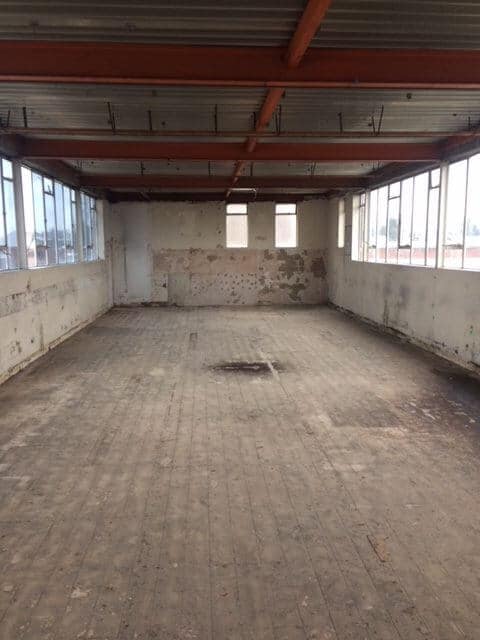
How Does The Dilapidations Protocol Work?
When a commercial property lease has expired, a landlord may claim damages from a tenant if they find losses have been caused by alleged breaches in the repairing obligations in the lease. This is then a trigger for the Dilapidations or Pre Action Protocol.
The Dilapidations Protocol (or “The Pre-Action Protocol for Claims to Damages in Relation to the Physical State of Commercial Property at Termination of a Tenancy”) is designed to simplify the process of calculating any dilapidations claim and other related issues before the landlord or tenant take the major step of starting Court proceedings. If no agreement can be reached, the protocol encourages alternative dispute resolution through mediation and negotiation to avoid litigation.
In simple terms, the Protocol aims to:
- Help both sides avoid expensive and time consuming litigation by encouraging them to reach a settlement of the issues in dispute
- Ensure early and full information exchange about the dispute between the landlord and tenant
- Sets the ground rules that the court expects each side to follow before starting court proceedings, including a timetable for the steps each side must take
- Establish the content standards, as well as quality of schedules, Quantified Demands and conduct of pre-action negotiations
- Help support efficient management of proceedings if litigation cannot be avoided
Dilapidations claims can be a complex and challenging process. Given how costly they can be, and the impact any dispute can have, it is vital to have experienced experts on your side. The team of chartered surveyors at Dilapsolutions has extensive experience of dealing with all aspects of the Dilapidations Protocol, from initial discussions right the way through to giving expert evidence at Court.
The Landlord's Claim
The Dilapidations or ‘Pre action’ protocol applies to commercial property in England and Wales, relating to claims for damages for dilapidations against tenants when a landlord considers there to have been breaches of the lease needing remedial works.

The first step in the Dilapidations Protocol Process is the landlord providing the tenant with a Schedule of Dilapidations. Usually, the landlord’s surveyor prepares the Landlord’s Schedule, which sets out what the landlord considers to be breaches of the lease agreement.
Breaches detailed are separated into relevant categories, namely: repair, reinstatement, redecoration. This Schedule should be endorsed either by the Landlord or the Surveyor. Both should work within the professional standards established in the Royal Institution of Chartered Surveyors’ Guidance Note on Dilapidations, namely that:
- the works set out in the schedule are reasonable to remedy the breaches
- when endorsed by the landlord, account has been taken of the landlord’s intentions for the property
- when endorsed by the landlord’s surveyor, a full account will be taken of the landlord’s intent for the property, and the landlord’s costings (if there are any) are reasonable
The Schedule of Dilapidations is sent as part of the broader Qualified Demand. The Qualified Demand details all aspects of the dispute with the tenant. It should provide a clear and detailed estimate of the damages in respect to the breaches of the lease, as well as the monetary sum sought (and any other items of loss where damages are being sought). It should also be clear if VAT applies.
Qualified Demands should also confirm that the landlord (and/or their surveyor) will attend a meeting. They should specify a reasonable time by which the tenant is to respond, usually within 56 days after the Quantified Demand is sent.
The Tenant's Response
The Tenant’s Response should come within a ‘reasonable time’ – usually 56 days after the Quantified demand has been sent. The Protocol itself does not provide a form for the tenant’s response but makes clear that the tenant should respond using the schedule of dilapidations that the landlord has sent.

The tenant’s response should be made as clear as possible to ensure the landlord can understand the tenant’s views on the items detailed in the Protocol and Schedule of dilapidations. The tenant (or the tenant’s surveyor) should endorse the response to confirm the works they have detailed are reasonable to remedy the potential breaches, and that the costs are reasonably payable for such works.
If the tenant or the tenant’s surveyor feels any of the items detailed in the schedule of dilapidations or Quantified Demand will be superseded by any work carried out by the landlord (or their intent for the property) then this should be stated in the tenant’s response.
Under the Protocol, a tenant is not required to respond to every item that the landlord has listed in the Quantified Demand. However, it is considered to be good practice to do so, and in line with the principles and objectives of the Protocol.
Procedure
The Protocol encourages both parties to meet before the tenant responds to a Quantified Demand, though they should meet within 28 days of the Response being sent to the landlord. The Protocol emphasises that both sides should try to agree on as many of the issues as possible. They should each attempt to explore Alternative Dispute Resolution before considering litigation. The willingness to engage with Alternative Dispute Resolution will often be taken into account by the court if the dispute is litigated and may have costs consequences.
The Protocol permits the landlord to properly quantify their loss by providing a breakdown of the issues, as well as any consequential losses based upon either a formal diminution valuation (in cases where the landlord doesn’t intend to carry out some or all of the works in the dilapidation schedule) or the landlord can provide an account of the expenditure on the issues.
If the tenant relies on a defence on the basis of diminution, they will need to state their case for doing so. They will also have to provide a diminution valuation to their landlord within a reasonable time, which is generally within 56 days of the landlord providing detailed breakdown of alleged issues and losses.
Alternative Dispute Resolution
Litigation is always considered in these matters to be the last resort when it comes to dilapidations protocol, and both sides are encouraged to consider using Alternative Dispute Resolution.
The landlord and the tenant can be required by the Court to provide evidence that they have considered alternative means of resolving their dispute. When making orders regarding who should pay costs, the court will take into account the extent to which each side were willing to explore Alternative Dispute Resolution. However, it is recognised by the law that neither of the parties can be forced to mediate with one another, or even enter into any form of alternative dispute resolution.
Summary
The purpose of the Dilapidations Protocol is to provide a step-by-step guide for calculating dilapidations liability, which the Court will expect tenants and landlords to follow when they’re negotiating settlements before litigation begins.
Getting the best results from a Dilapidation Protocol is reliant on the use of qualified building surveyors and valuation surveyors. They will identify breaches and potential remedies, as well as assess the extent to which breaches might have impacted the freehold value of the property.
Dilapsolutions is highly qualified and can provide support every step of the way.
If you are a tenant or a landlord dealing with matters related to related to the Dilapidations Protocol our team can provide you with expert assistance. For an initial no obligation discussion, contact Dilapsolutions either by phoning us on 03300 945446 or by email, enquiries@dilapsolutions.com
Knowledge Hub
Dilapsolutions
Chartered Surveyors










